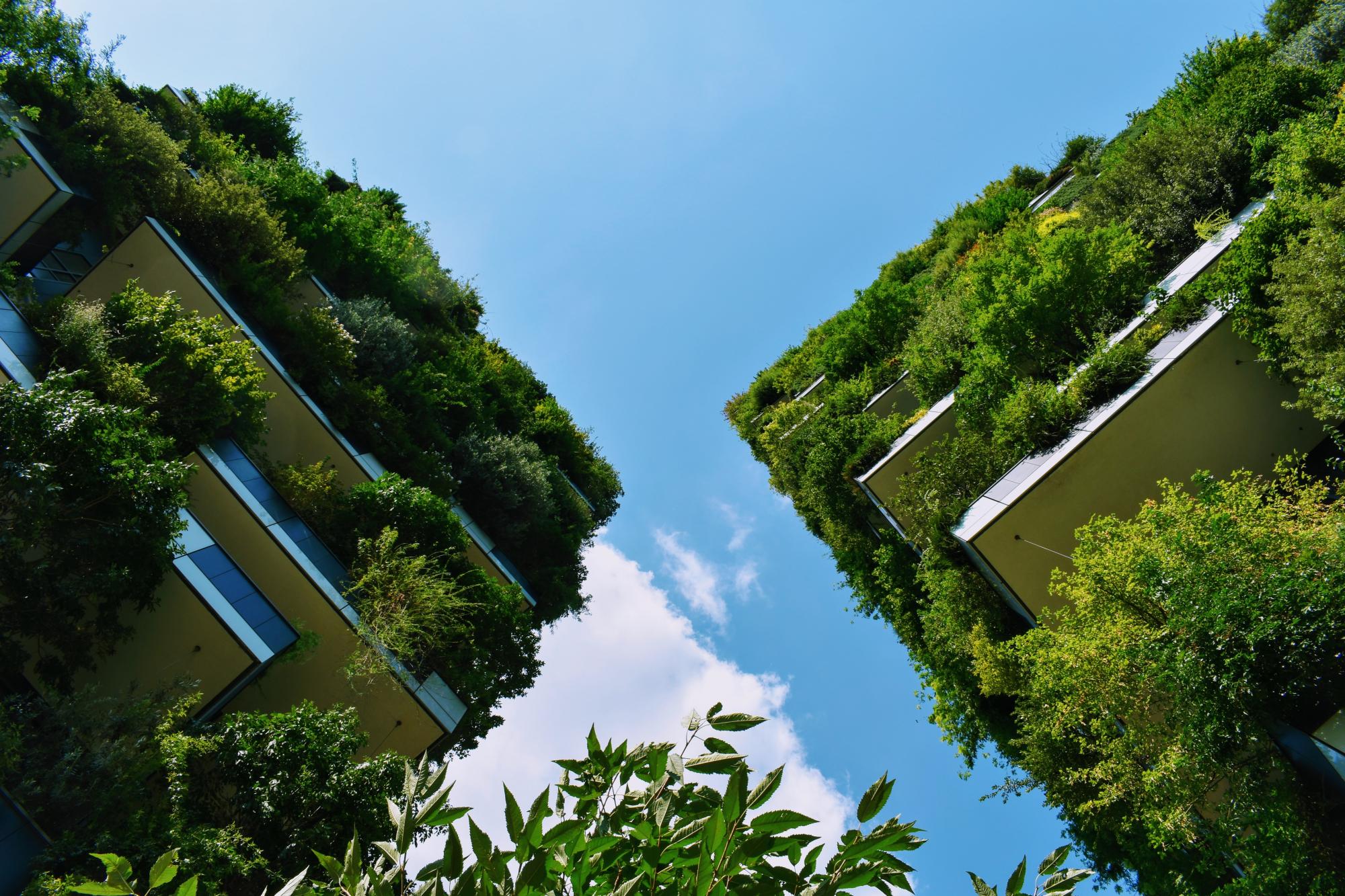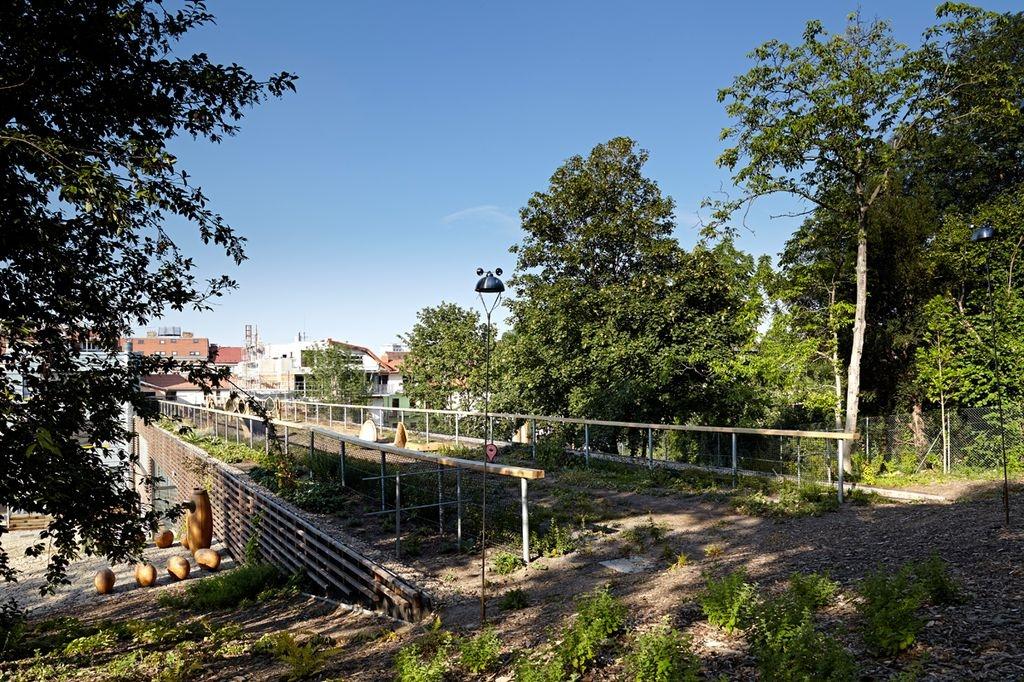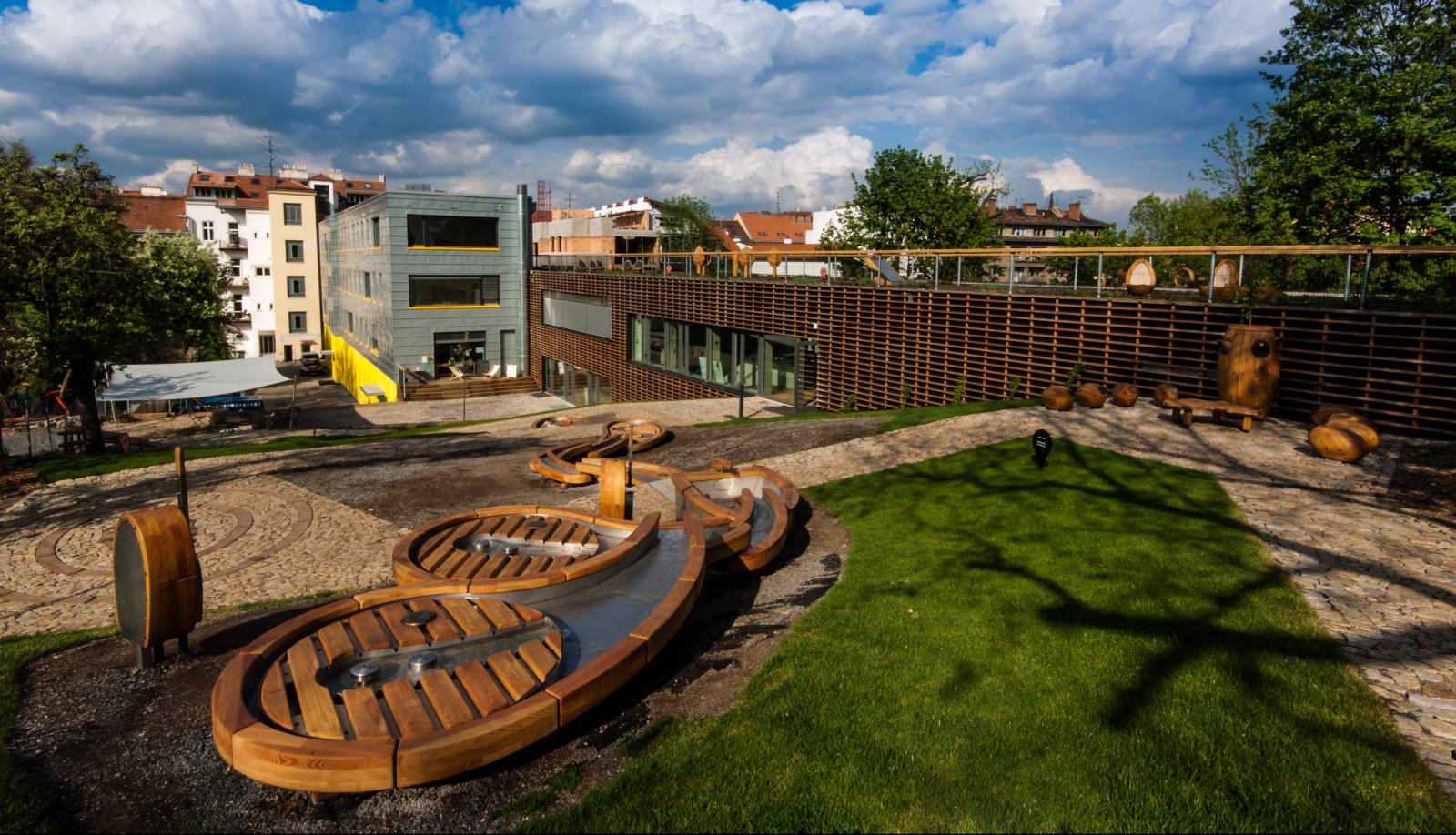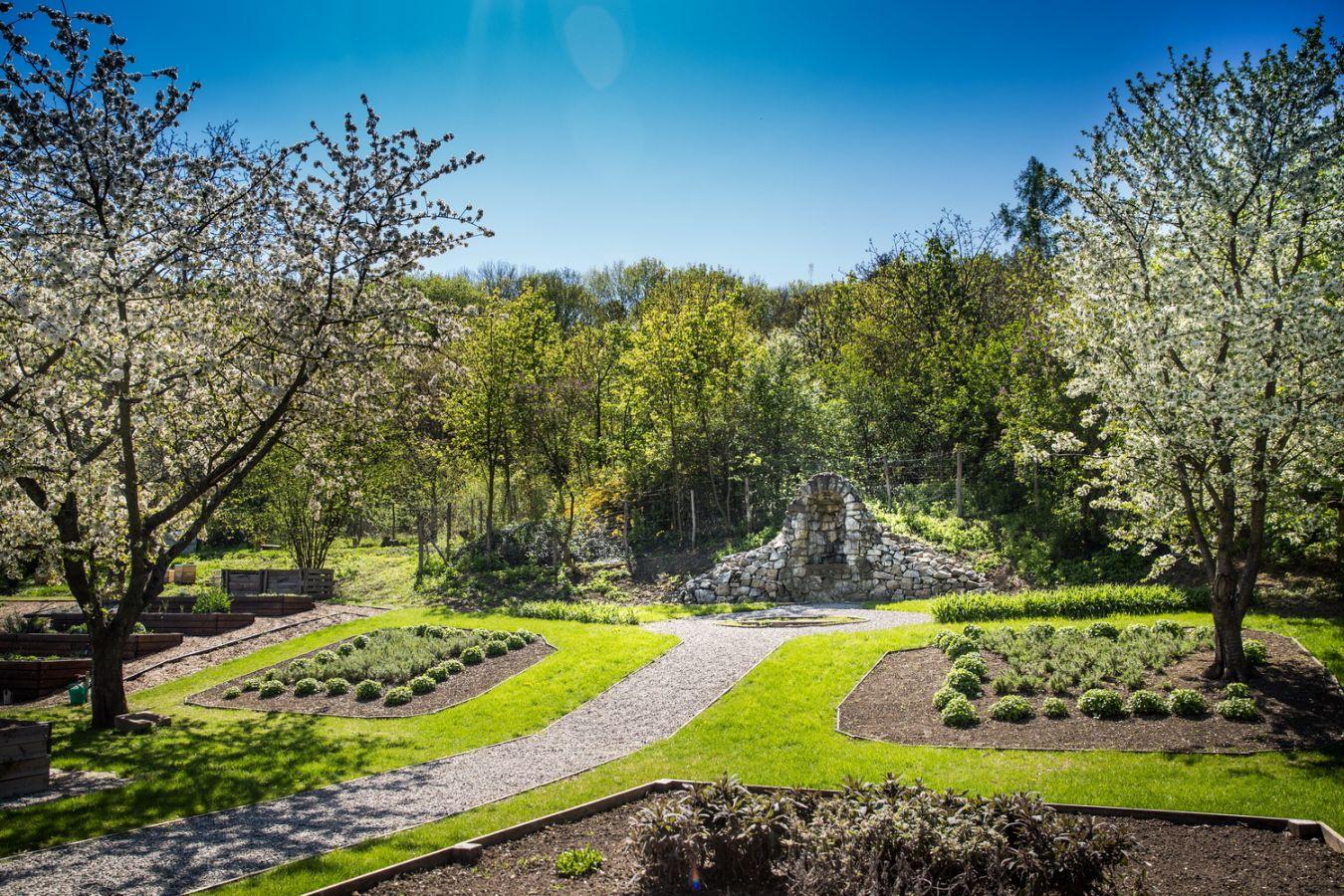Last updated: June 2024
Situated in park Spilberk, the garden features a building with a green roof and a garden with various plots. The building is designed to be carbon neutral and reuses rainwater for toilet flushing and for watering the garden plots. The garden is used for horticultural purposes and environmental education, as well as animal and beekeeping. The complex improves the local micro-climate through cooling and humidification and promotes biodiversity. (Ref. 1; Ref. 2; Ref. 5; Ref. 6)
Overview
Nature-based solution
- Blue infrastructure
- Lakes/ponds
- In-land wetlands, peatlands, swamps, and moors
- Community gardens and allotments
- Community gardens
- Grey infrastructure featuring greens
- Green playgrounds and school grounds
- Nature on buildings (external)
- Green roofs
Key challenges
- Climate action for adaptation, resilience and mitigation (SDG 13)
- Climate change adaptation
- Green space, habitats and biodiversity (SDG 15)
- Green space creation and/or management
- Water management (SDG 6)
- Flood protection
- Stormwater and rainfall management and storage
- Improvements to water quality
- Health and well-being (SDG 3)
- Improving mental health
- Creation of opportunities for recreation
- Sustainable consumption and production (SDG 12)
- Sustainable consumption
Focus
Creation of new green areas, Creation of semi-natural blue areas, Knowledge creation and awareness raising
Project objectives
- Provide environmental education (Ref. 2)
- Provide a place for recreation (Ref. 6)
- Support biodiversity (Ref. 2; Ref. 1)
- Efficient handling of rainwater (Ref. 1)
- Reduce air pollution (Ref. 2)
- Connecting different urban public spaces and moods - parks with streets, courtyards with gardens (Ref. 4)
Implementation activities
Building a green roof on the house provides a habitat for birds and insects, purifies the air, captures rainwater for reuse, and insulates the building. (Ref 2.; Ref. 1). The roof garden contains a wetland biotope that cleans the gray water (Ref. 3). Rainwater is also collected in a storage pond and used for irrigation and other purposes (Ref. 2; Ref. 5). Organizing educational and recreational events. These include sustainable horticulture education, beekeeping and animal care education, sustainable cooking and herbal cosmetics courses, picnics, private events (Ref. 6). "We provide a number of educational and excursion programs for many target groups. " (Ref 10)
Climate-focused activities
Climate change adaptation:
- Increase or improve urban vegetation cover to help reduce outdoor temperature
- Create or improve outdoor spaces to help people escape from urban heat
- Implement green walls or roofs to lower indoor temperature and provide insulation
- Implement sustainable urban drainage infrastructure (e.g. to make space for water)
Main beneficiaries
- Public sector institution (e.g. school or hospital)
- Non-government organisation/Civil Society
- Citizens or community groups
Governance
Management set-up
- Led by non-government actors
Type of initiating organisation
- Non-government organisation/civil society
Participatory approaches/ community involvement
- Other
Details on the roles of the organisations involved in the project
The Open Garden was built and is managed by the Czech Environmental Partnership Foundation, who bought the land in 2006 (Ref. 1; Ref. 6). This is an NGO that distributes different grants to projects that promote sustainable development (Ref. 7). The NGO also provides educational and professional services, including in the Open Garden (Ref. 7; Ref. 1). Regarding EU funding, the Operační program Životní prostředí was used, which is a mechanism for the Czech Republic to access funds from the European Union. The fund was operational from 2007-2013 (Ref. 12).
Project implemented in response to ...
... an EU policy or strategy?
Unknown
(According to an e-mail response from the CEO of the Open Gardens, the intervention was co-funded (65%) by the EU's Operational Program Environment 2007-2013, priority 7 - Infrastructure for Environmental Education (Ref. 10). The programme was funded by the ERDF 2007-2013 and the Cohesion Fund. The ERDF was governed by Regulation (EC) No 1080/2006 of the European Parliament and of the Council of 5 July 2006 on the European Regional Development Fund and repealing Regulation (EC) No 1783/1999. The Cohesion Fund was governed by Council Regulation (EC) No 1084/2006 of 11 July 2006 establishing a Cohesion Fund and repealing Regulation (EC) No 1164/94.)
... a national policy or strategy?
Unknown
(Response from e-mail from the CEO: "we have incorporated national and regional strategies for environmental education into the design of outdoor educational features with the aim that they fit into the educational curricula of primary schools." (Ref. 10).)
... a local policy or strategy?
Unknown
Financing
Total cost
€2,000,000 - €4,000,000
Source(s) of funding
- Funds provided by non-governmental organization (NGO)
- EU funds
Type of funding
- Direct funding (grants, subsidies, or self-financed projects by private entities)
Non-financial contribution
Unknown
Impacts and Monitoring
Environmental impacts
- Climate change
- Lowered local temperature
- Strengthened capacity to address climate hazards/natural disasters
- Enhanced carbon sequestration
- Reduced emissions
- Water management and blue areas
- Improved stormwater management
- Green space and habitat
- Increased green space area
- Increased ecological connectivity across regeneration sites and scales
- Reduced biodiversity loss
- Enhanced support of pollination
Economic impacts
- Unknown
Socio-cultural impacts
- Social justice and cohesion
- Improved access to urban green space
- Health and wellbeing
- Improved mental health
- Improved physical health
- Gain in activities for recreation and exercise
- Education
- Increased knowledge of locals about local nature
- Increased awareness of NBS and their benefits
Type of reported impacts
Achieved impacts
Presence of formal monitoring system
Yes
Presence of indicators used in reporting
Yes
Presence of monitoring/ evaluation reports
Yes
Availability of a web-based monitoring tool
Yes
References
Ref. 1. UrbanAdapt (2015). Adaptace na zmenu klimatu ve mestech. [pdf] [Available at: Source link [Accessed Jul 20, 2020].
Ref. 2. Source link (2015). Otevrena Zahrada v Brne. [online] [Website unavailable in Jul. 2020]
Ref. 3. Skanska (2012). Vzdělávací a poradenské centrum Otevřená zahrada. [pdf] [Available at: Source link. [Accessed July 20, 2020].
Ref. 4. Internetova Encyklopedie Dejin (2015). Otevrena Zahrada a Poradenske Centrum. [online] [Available at: Source link. [Accessed on July 20, 2020].
Ref. 5. Šmídek, Petr (2013). Otevřená zahrada a poradenské centrum NNO. [online] [Available at: Source link. [Accessed on July 20, 2020].
Ref. 6. Partnership Foundation (No date). Open Garden. [online] [Available at: Source link. [Accessed July 20, 2020].
Ref. 7. Nadace Partnerstvi (No Date). Environmental Partnership. [online] [Available at: Source link. [Accessed July 20, 2020].
Ref. 8. UrbanAdapt (2015). About the Project. [online] [Available at: Source link. [Accessed July 20, 2020].
Ref. 9. Eea Grants (2016). Zásady pro rozvoj adaptací na změnu klimatu ve městě Brně: s využitím ekosystémově založených přístupů Východiska pro zpracování Strategie pro Brno 2050. [pdf] [Available at: Source link. [Accessed July 20, 2020 2017).
Ref. 10. Kundrata, M. (2017). Interview. Available below.
Ref. 11. GotoBrno. (No Date). Open Gardens (Otevřená zahrada). [online]. [Available at: Source link. [Accessed on July 20, 2020].
Ref. 12. iBRNO. (2012). The living textbook Open Garden grows in the center of Brno. [online]. [Available at: Source link. [Accessed on July 20, 2020].
Ref. 2. Source link (2015). Otevrena Zahrada v Brne. [online] [Website unavailable in Jul. 2020]
Ref. 3. Skanska (2012). Vzdělávací a poradenské centrum Otevřená zahrada. [pdf] [Available at: Source link. [Accessed July 20, 2020].
Ref. 4. Internetova Encyklopedie Dejin (2015). Otevrena Zahrada a Poradenske Centrum. [online] [Available at: Source link. [Accessed on July 20, 2020].
Ref. 5. Šmídek, Petr (2013). Otevřená zahrada a poradenské centrum NNO. [online] [Available at: Source link. [Accessed on July 20, 2020].
Ref. 6. Partnership Foundation (No date). Open Garden. [online] [Available at: Source link. [Accessed July 20, 2020].
Ref. 7. Nadace Partnerstvi (No Date). Environmental Partnership. [online] [Available at: Source link. [Accessed July 20, 2020].
Ref. 8. UrbanAdapt (2015). About the Project. [online] [Available at: Source link. [Accessed July 20, 2020].
Ref. 9. Eea Grants (2016). Zásady pro rozvoj adaptací na změnu klimatu ve městě Brně: s využitím ekosystémově založených přístupů Východiska pro zpracování Strategie pro Brno 2050. [pdf] [Available at: Source link. [Accessed July 20, 2020 2017).
Ref. 10. Kundrata, M. (2017). Interview. Available below.
Ref. 11. GotoBrno. (No Date). Open Gardens (Otevřená zahrada). [online]. [Available at: Source link. [Accessed on July 20, 2020].
Ref. 12. iBRNO. (2012). The living textbook Open Garden grows in the center of Brno. [online]. [Available at: Source link. [Accessed on July 20, 2020].



